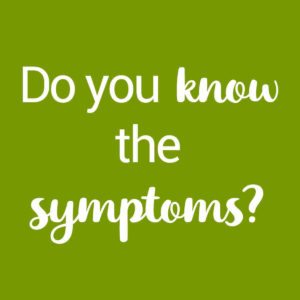Knowing about STIs is an important part of being responsible for your sexual health, the old saying what you don’t know can’t hurt you simply doesn’t apply here so let’s set aside the STI stigma and continue the conversation starting with Herpes.
 Genital Herpes, more commonly known simply as Herpes is a viral infection. Most people know that it presents as painful ulcers (sores) on the genital and/or anal parts of both males and females. The same ulcers, which appear on the lips are commonly called cold sores.
Genital Herpes, more commonly known simply as Herpes is a viral infection. Most people know that it presents as painful ulcers (sores) on the genital and/or anal parts of both males and females. The same ulcers, which appear on the lips are commonly called cold sores.
There are two different Herpes viruses, Herpes Simplex Virus 1 (HSV-1) and Herpes Simplex Virus 2 (HSV-2). Usually HSV-1 causes oral infection and HSV-2 causes genital infection, however with oral sex becoming a more regular part of our sex lives, this is becoming less straightforward, meaning each virus is capable of infecting the other area. So a key takeaway here is that if you or your sexual partner suffer from cold sores, caused by HSV-1 it’s best to be cautious with oral sex.
Moving onto the diagnosis of genital herpes, this one does unfortunately require a face-to-face consultation with a doctor. You will need to have an examination and have viral swabs of the infected area taken. Talking to a doctor might seem difficult and embarrassing, but there is unfortunately no blood test that gives a Herpes diagnosis so if you have sores of any kind down there then you need to bite the bullet and head to your nearest doctor. Trust me, doctors have seen and heard it all before and we’re not there to judge you.
It’s not unusual for people to feel ashamed at the idea of having contracted herpes, but it is a common condition. Just think about how many people suffer from cold sores intermittently. Estimates place the prevalence of Herpes in Australia at 1 in 8 people, with approximately 85% of Australians carrying HSV-1 and 20% of Australians carrying HSV-2 and guess what? Just like every other STI, Herpes does not discriminate, it can and does happen to people from all walks of life so don’t be ashamed.
Genital Herpes is spread by direct skin-to-skin contact during sexual activity. But here’s the tricky part of the situation, the problem with Herpes is many people who carry the virus do not know that they have it, therefore they don’t know that they can transmit it to other people and even those who do know they have a Herpes infection will not know when they are shedding the virus, meaning they have no signs of infection but have it on their skin and may transmit it to other people, hence why it is a common condition.
To minimise the risk of transmission and acquisition of Herpes, it is important that condoms are used every time for vaginal, oral and anal sex.
The good news is that appropriate anti-viral medication can be prescribed for Herpes to either reduce the length and severity of an outbreak or reduce the risk of an outbreak if used regularly as prevention.
Moving on to Human Papilloma Viruses or as it’s more commonly known HPV, which is a family of viruses that cause warts on the body, most importantly it has drawn attention due to the discovery that is linked to cervical cancer in women.
HPV is a little more complex than other STIs, there are over 100 strains of HPV, with 40 affecting the genitals. However, two strains are responsible for causing approximately 90% of visible warts, whilst two other strains are responsible for causing approximately 70% of cervical cancer cases. Approximately 80% of people will be infected with a HPV strain at some stage in their life, so it is also far from being uncommon.
Cervical cancer can develop in women well before any symptoms of HPV are present. Therefore it is vitally important that all women undergo pap smears every two years to assess for pre-cancerous cervical changes and allow early intervention before cancer develops. Australia has been a world leader in developing a cervical cancer-screening program, as evidenced by our low rates of cervical cancer compared to other nations. However, continued vigilance is required to maintain this trend. On a side note, ladies, please note that Pap Smears do not detect any other STI and having one is far from the same as having an STI test, you need to be diligent with both.
Back to HPV, The Gardasil vaccine is now also given to boys and girls between the ages of 12 & 15 in Australia depending on what State you’re in. The vaccine protects against specific strains of HPV, lowering the risk of young women developing cervical cancer significantly. However, whilst the major strains are protected against, the risk of developing cervical cancer from HPV is not zero if the immunisation is given hence regular pap smears are still required.
Gentlemen you are at risk of HPV just as much as females, however cosmetic warts are not really a major issue compared to cervical cancer. The vaccine for you is mainly to reduce the transmission of HPV.
If you develop visible lesions, it is important that you visit a GP to receive topical treatments.
Now let’s talk about HIV (Human Immunodeficiency Virus). I want to start by saying that the developments in treating HIV have been hugely significant and it is possible to live a long and fulfilling life with HIV, but early detection and treatment is vital.
For those of you who have minimal knowledge of what HIV actually is it attacks the immune system using its cells to reproduce itself and weakening it over time eventually resulting in Acquired Immune Deficiency Syndrome or as it’s less formally known AIDS. However, the treatments of today when taken continuously can reduce a person with HIV’s viral load to the point where they can not only lead a healthy life, but also significantly reduce their risk of passing the infection onto others, we repeat, regular testing and early detection is vital.
HIV is tested for via simple blood test that will be examined for HIV antibodies, which are found in the blood of anyone infected with the virus. It is important to note that HIV antibodies may not show up in a person’s blood for up to 12 weeks, which means you can still have the virus, but it will not be detectable, this is what we call a ‘window period’ and once again it shows the importance of regular testing particularly if you are engaging in unprotected sex.
Let’s just quickly talk about PEP and PrEP. PEP or Post Exposure Prophylaxis is a single course of anti-viral medication that can prevent HIV contraction if the treatment is started within 72 hours of exposure to the virus, meaning if you have reason to believe that you may have been exposed to HIV and it has been less than 72 hours you should proceed immediately to a doctor, hospital or sexual health clinic and receive PEP.
PrEP is a relatively new form of pre-exposure treatment for HIV, it is a medication called Truvada (tenofovir/emtricitabine), which when taken regularly has been shown to prevent people from contracting HIV. PrEP trials are currently underway in almost every state in Australia for those most at risk of contracting HIV.
In conclusion, modern medicine has given us some fantastic ways to fight HIV, however practising safe sex and regular testing should still be apart of every sexually active person’s routine.
There you have it, what you need to know about the three H’s, all of which we test for privately and securely online at Stigma Health. You can also get those regular HIV, Chlamydia, Gonorrhoea and Syphilis tests with us there too minus the face-to-face with the doctor, but for Herpes & HPV you will need to see a doctor.![]()
Until next time remember, Be Safe Not Sorry, use protection and get tested regularly.
This article was provided by Mitchell Tanner, Head Doctor at Stigma Health, click to view their profile. If you need further assistance and treatment after your test, speak with your GP – you can find a local GP by using doctors.com.au.
